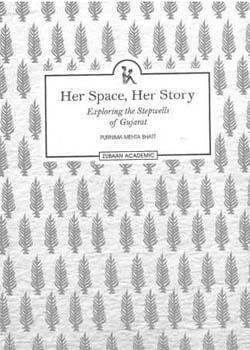What makes this book a unique read is that it focuses not on any stepwells in Gujarat but on stepwells that were commissioned by women between the 7th and the 19th centuries— we are talking about the connect that stepwells and women had which was not restricted only to women drawing water from them but also of women creating a space for themselves at the stepwells. The book opens with two pictures facing each other—one is a map of the important stepwells commissioned by women or built to honour them while the other picture is that of a group of women on their way to the wells with their water pots. The book begins by tracing the importance of water for rituals and traditions across India. Bhatt traces the history behind the construction of wells and stepwells which were regarded as ‘acts of charity’.
The healing quality of water finds mention in the Rigveda: Amrta is in the waters; in the Waters, there is healing balm; Be swift, ye Gods, to give them praise. Within the waters—the waters hold all medicine.
What Bhatt does by tracing the origins is to bring to focus the importance water has held in ancient texts and how lives of women are woven into it. Water is seen as a symbol of fertility and Bhatt mentions a few practices at the beginning of the book which indicate a set of beliefs that certain stepwells can make a woman fertile. A few stepwells are believed to have supernatural powers as propagated by the locals. The stepwells that are in focus are those of Gujarat where they are known as ‘vav’. There are various Sanskrit texts like the Shilpa Shastra and Agni Purana that provide instructions on how to construct wells. Vapi Shilpa Shastra deals with the construction of stepwells. In Gujarat and Rajasthan, the construction of the wells and stepwells was carried out by craftsmen or labourers known as ‘Somparas’ and had steps leading down to the water. In a dry and arid state like Gujarat, stepwells were a blessing as well as a place where women congregated to talk and socialize. Stepwells became places where travellers used to rest for the night or on hot afternoons. The lack of rest houses and caravansarais led to people taking refuge here. Also important to note is that Gujarat was located at the cross-roads of trade routes. Bhatt wraps up the discussion on old days with how in the nineteenth century with the introduction of modern technology, stepwells became a thing of the past. In recent research it has been found that stepwells exist in other places of India like Rajasthan, Delhi, Punjab and Haryana, some of them commissioned by women.

